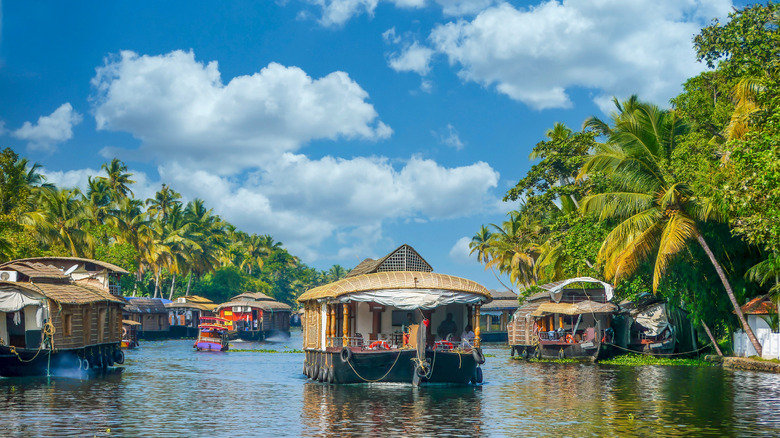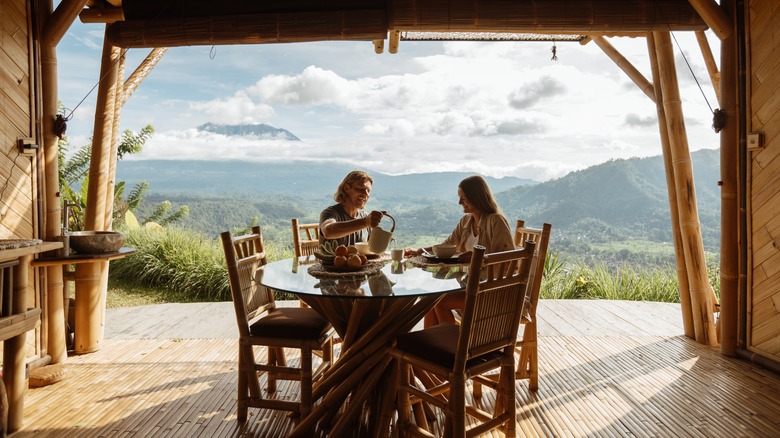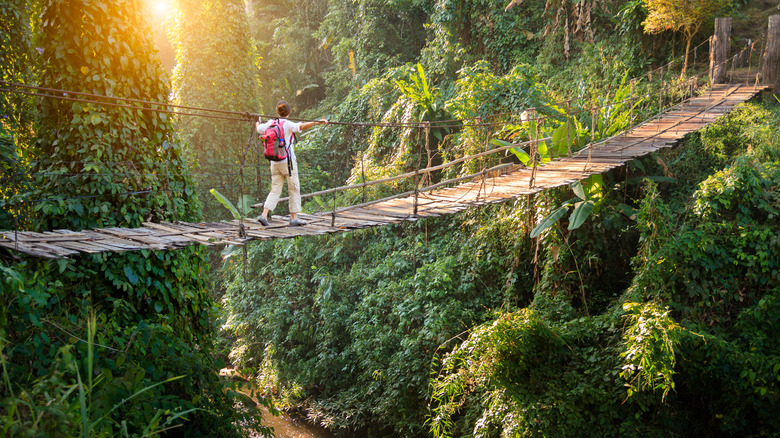Does the idea of flocking to the Eiffel Tower in Paris make you cringe? Is hanging out at Times Square in New York or waiting in line at the Universal Studios in Singapore your idea of hell? You may be part of a growing number of travelers who are eschewing these tourist hotspots in favor of more authentic, less commercialized experiences. If you find yourself drawn to the road less traveled, you may identify with a thoughtful, trendy travel type: alternative travel.
Alternative travel emerged in the early 70s to counteract the many negative effects of mass tourism. It is a travel concept that focuses on experiencing a destination beyond its popular tourist attractions. By forgoing a “follow-the-herd” mentality, Insta-approved travel trends, and superficial attitudes, travelers can challenge themselves in the best of ways, fostering personal growth and a deeper understanding of the world. It also allows for a more authentic immersion in the local way of life by, for example, residing in a homestay or participating in traditional activities.
Traveling off the beaten path can lead to unique stories and experiences that are uncommon among the average tourist — perhaps discovering a hidden beach, a small art gallery, or a local festival. Alternative travel often aligns with sustainable tourism, slow travel, voluntourism, and other similar practices. By visiting less popular areas, travelers help distribute tourism revenue more evenly and reduce the environmental and cultural impact on overcrowded destinations (we’re looking at you, Venice, Bali, etc.).
How to embrace alternative travel

Anyone can embrace alternative travel — all you need is an open mind and a little bit of planning. Start by researching destinations that are not typical tourist magnets. The most-visited countries in the world are France, Spain, U.S., China, and Italy — and you can probably guess which cities are catching all the buzz. Instead, look for countries known more for their authentic local culture than tourist attractions, or even “dupe” destinations — think Liechtenstein, Albania, Papua New Guinea, Bhutan, and similar places.
Stop counting countries (gasp!). Rather than trying to cover multiple destinations in a short period, spend more time in one place. This allows for a deeper connection with the area and its people. Let’s say you’re going on a grand European road trip — instead of zooming through the continent’s 50 countries at record speed, choose a handful and take it slow, stay a while. The mantra is quality over quantity, underplan to experience more, and remember to travel gently and mindfully (ideally by foot or public transport).
Instead of staying in chain hotels, look for local accommodations such as guesthouses, B&Bs, eco-lodges, or even camping. This supports the local economy and also offers a much more authentic experience. Moreover, one of the best ways to find hidden gems on an alternative travel journey is by talking to locals. They can provide insight into the best local cafés, shops, and lesser-known sites worth visiting. Be prepared to go off-plan and explore these unexpected opportunities.
Challenges and considerations for alternative travelers

Think of alternative travel as the non-conformist, conscientious, slightly rebellious cousin of “regular” travel. While alternative travel is extraordinarily special (and more important than ever), it doesn’t come without its challenges. Language barriers, less-developed tourist infrastructure, lack of sustainable options, higher costs for certain experiences, and the need for more in-depth planning are some potential difficulties. However, many travelers find that these very challenges actually add to the richness of the experience and can lead to a profound sense of accomplishment.
As the world becomes more connected and awareness of the impacts of mass tourism grows, alternative travel is likely to gain more popularity. In fact, according to a 2019 report by the Center for Responsible Travel (CREST), this style of tourism is on an exponential rise. This shift could take sustainable tourism a step further, which will be better for the environment, local cultures, and travelers. As the benefits are spread more widely and equitably, travel will only become more personal and meaningful — for everyone involved.
Global tourism was something that started in 1950 with around 25.3 million international tourists, which then swelled to over a billion in 2023. The past 70 years of mass tourism brought some UNESCO sites to the risk of “irreversible” damage, contributed needlessly to a global waste crisis, and pushed many cultures and locations to the brink. Alternative travel requires a degree of flexibility and savviness; however, it is a revolution the tourism industry desperately needs.

